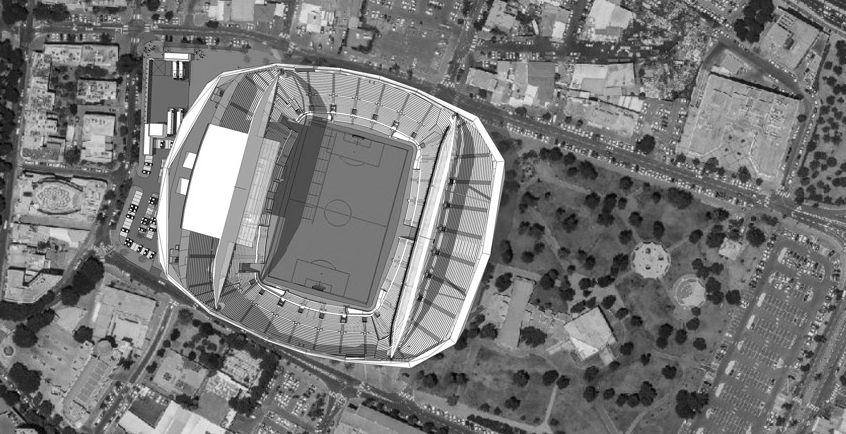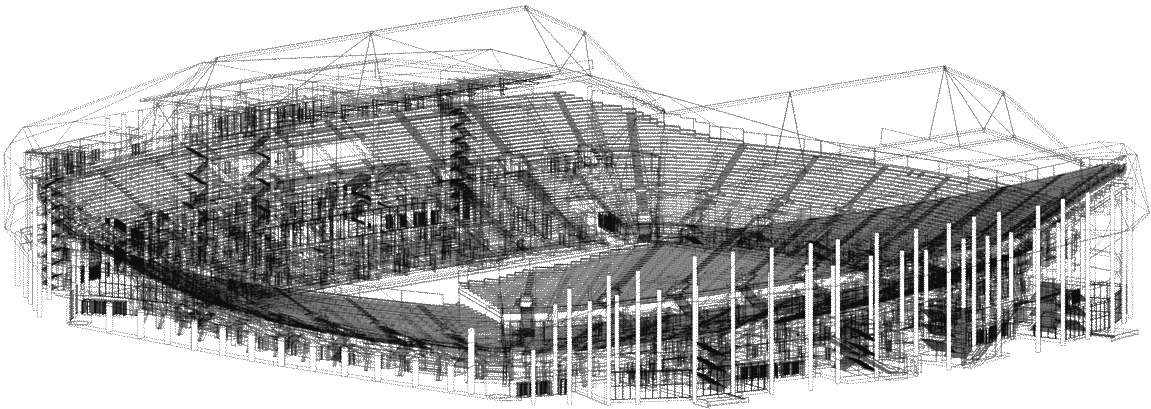Bloomfield Stadium
| Capacity | 29 400 |
|---|---|
| Country | Israel |
| City | Tel Aviv |
| Clubs | Hapoel Tel Aviv FC, Maccabi Tel Aviv FC, Bnei Yehuda Tel Aviv FC |
| Inauguration | 13/10/1962 (Hapoel - Shimshon Tel Aviv, 1-1) |
| Construction | 04/09/1960 - 1962 |
| Renovations | 2000, 2008-2010, 2012, 2016-2020 |
| Cost | NIS 500 million (2016-2020) |
| Design | Max Galpaz et al. Schwartz (1962), Mansfeld-Kehat Architects (2019) |
| Contractor | Asher Green Construction (2016-2020) |
| Address | Hatkuma St, Tel Aviv-Yafo, Israel |
Advertisement
Bloomfield Stadium – stadium description
Groundbreaking for the new stadium in Tel Aviv took place in September 1960. Financing was provided by Canadian Jewish charities, mostly by the Bloomfield family. Thus the name, which to date honours Louis M. Bloomfield and Bernard M. Bloomfield. First game at the stadium was the Tel Aviv derby between Hapoel and Shimshom in October 1962. Official opening took place later, though, as Hapoel fought with Sportsclub Enschede of the Netherlands in December of the same year.
Hapoel is the only club to host all their games here since the very beginning. In 2000 the club was joined by local rivals Maccabi and in 2004 also Bnei Yehuda began their tenancy at Bloomfield. With extensive modernisations of 2010 and 2012 the stadium was qualified as a Category 4 venue by UEFA, enabling both Champions League games and the hosting of U21 Euro 2013. However, this proved insufficient in the long run, prompting complete reconstruction of the stadium already in 2015.
Contrary to strategies chosen by most other Israeli cities (building new stadia in previously vacant areas), in Tel Aviv the preferred solution was to expand on the historical venue, regarded by some as a “temple”. The building’s shape was determined by two crucial factors. First, the city decided to retain existing stands and build upon their layout. Second, there are two streets running tightly behind each goal, which meant the stadium had to primarily grow towards the west and east sides.

Basing new stands on the historical layout resulted in Bloomfield receiving a unique seating bowl, not matched by any other stadium. The stands have a single tier along the west, south and north sides, while the east stand has two tiers. During work on the design it proved possible to push capacity beyond the desired 24,000, resulting in over 29,000 seats being installed in the end. A major advantage of the layout is that fans have a great overview of the field but also of other fans, regardless where they sit.
Additionally, the west stand received the long-awaited hospitality infrastructure. It’s not just limited to the 10 themed boxes, in the long run the stadium should be able to host events for up to 1,000 people within the west stand. Main areas of crowd circulation were raised well above ground level, leaving the much needed space for administrative and technical uses, as well as successfully avoiding unnecessary perimeter fencing.

Although the stadium doesn’t offer a canopy atop all seats, it does have two massive trusses resting above the auditorium. At present they carry floodlights and a partial cover of the west stand, however in the future they will be able to bear the weight of a more comprehensive roof. Until then, the trusses will become the peak point of the stadium, reaching 39 m in height. But visually, the most impressive element is the angular white envelope wrapping the stadium, giving the unique and nearly symmetric shape.
Interestingly, the stadium was built without additional parking, despite growing from 14,000+ to 29,000+. With lack of room around, only the bare minimum to service the west stand was created. In the short term secondary parking lots are to be used along with shuttle buses, while in the long run the city’s light rail is to reach the stadium.
Reconstruction began in 2016 and was initially expected to end in 2018. However, during the works a long list of issues arose and the project slipped several times. Even after reopening in second half of 2019, the building wasn’t complete. Its white cladding was delivered only during the 2020 pandemic. Along with challenges, the building’s cost increased from NIS 350 million to 500 million.
Advertisement
Pictures
-

2020 © Tel Aviv Yafo Municipality Mansfeld-Kehat Architects 
2020 © Tel Aviv Yafo Municipality Mansfeld-Kehat Architects 
2020 © Tel Aviv Yafo Municipality Mansfeld-Kehat Architects 
2020 © Tel Aviv Yafo Municipality Mansfeld-Kehat Architects 
2020 © Tel Aviv Yafo Municipality Mansfeld-Kehat Architects 
2020 © Tel Aviv Yafo Municipality Mansfeld-Kehat Architects 
2020 © Tel Aviv Yafo Municipality Mansfeld-Kehat Architects 
2020 © Tel Aviv Yafo Municipality Mansfeld-Kehat Architects 
2020 © Tel Aviv Yafo Municipality Mansfeld-Kehat Architects 
2020 © Tel Aviv Yafo Municipality Mansfeld-Kehat Architects 
2020 © Tel Aviv Yafo Municipality Mansfeld-Kehat Architects 
2020 © Tel Aviv Yafo Municipality Mansfeld-Kehat Architects 
18.01.2014 © Stadiontour.at 
18.01.2014 © Stadiontour.at 
18.01.2014 © Stadiontour.at 
18.01.2014 © Stadiontour.at 
18.01.2014 © Stadiontour.at 
18.01.2014 © Stadiontour.at 
18.01.2014 © Stadiontour.at 
18.01.2014 © Stadiontour.at
2012-2016:
Related news
2021
-

Stadium of the Year: Don’t forget, YOU select the next best stadium!
Almost two thirds of the Popular Vote are behind us, time for an update. We’re nearing 14,000 votes, is yours part of that number? See why we’re asking.
-

Stadium of the Year 2020: Time for You to nominate!
Late January is traditionally the time for us to ask you, which stadiums deserve recognition after the past 12 months. But, since 2020 was an exceptional year, this time we’re changing one criterion. You probably already know which one...

 StadiumDB
StadiumDB


